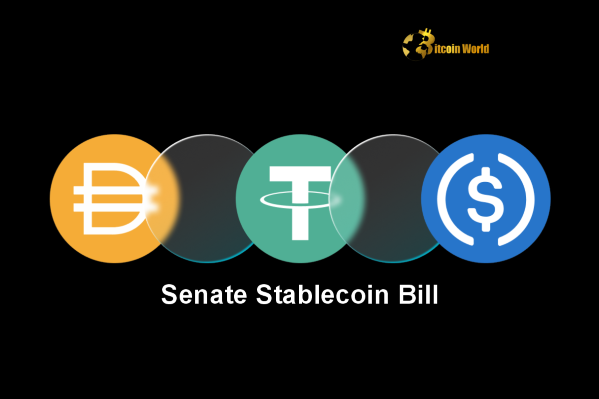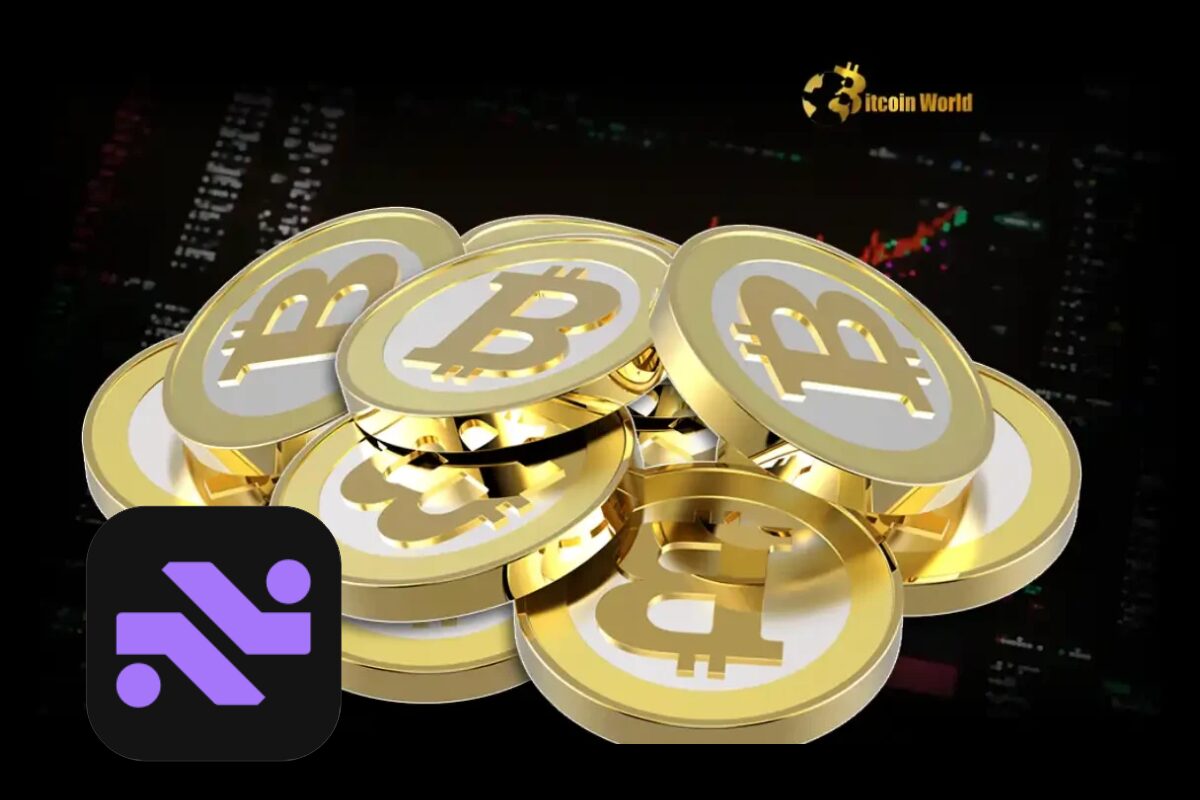BitcoinWorld

Ethereum Whale Activity: Unveiling a Strategic $9.84M ETH Withdrawal from Kraken
In the dynamic world of cryptocurrency, few events capture attention quite like significant movements from large holders, often dubbed ‘whales.’ Recently, the crypto community buzzed with news of a substantial Ethereum whale activity: a newly established wallet withdrew a staggering 2,759 ETH, valued at approximately $9.84 million, directly from the Kraken exchange. This move, as highlighted by on-chain analytics platform Onchain Lens on X, immediately adds to the wallet’s already impressive holdings, now totaling 15,100 ETH worth an estimated $54 million. Such considerable withdrawals from exchanges are frequently interpreted as a strong signal of accumulation, suggesting an intent for long-term holding rather than immediate sale. But what exactly does this specific Ethereum whale activity imply for the broader market and the future trajectory of ETH?
What Does This Ethereum Whale Activity Mean for the Market?
When we observe a large sum of cryptocurrency, especially Ethereum, being moved off an exchange and into a private wallet, it’s akin to a high-net-worth individual moving their assets from a trading account into a secure vault. This particular Ethereum whale activity suggests a strong conviction in ETH’s future value. Here’s a breakdown of what such a move typically signifies:
- Reduced Selling Pressure: Funds held on exchanges are readily available for sale, contributing to potential selling pressure. Moving ETH off an exchange removes it from this immediate supply pool.
- Long-Term Conviction: Whales often engage in extensive market research and possess deep insights. Their decision to accumulate suggests they believe the asset is undervalued or poised for significant growth over an extended period.
- Security Prioritization: Storing large amounts of crypto in a self-custodied wallet (like a hardware wallet) indicates a focus on security over liquidity, reinforcing the long-term holding narrative.
- Supply Shock Potential: If many whales accumulate simultaneously, it can lead to a reduction in the available supply on exchanges, potentially driving up prices if demand remains constant or increases.
This specific withdrawal from Kraken highlights a strategic decision by a new, powerful market participant. It’s not just a transfer; it’s a statement about their outlook on Ethereum’s future.
Decoding On-Chain Signals: Why Track Ethereum Whale Activity?
Understanding the movements of large holders, or ‘whales,’ is a cornerstone of advanced cryptocurrency market analysis. On-chain data provides unparalleled transparency into these movements, allowing investors to gain insights that might not be immediately apparent from price charts alone. Tracking Ethereum whale activity is crucial because:
- Precursor to Price Movements: Historically, significant whale movements have often preceded notable price shifts. Accumulation can signal an impending bullish trend, while large deposits to exchanges might suggest a coming sell-off.
- Sentiment Indicator: Whale behavior can act as a powerful indicator of overall market sentiment. If the largest players are bullish, it can instill confidence in smaller investors.
- Liquidity Insights: By monitoring where ETH is being held (on exchanges vs. private wallets), analysts can gauge the immediate liquidity available for trading, impacting volatility.
Let’s look at how different types of Ethereum whale activity can be interpreted:
| Whale Activity Type | Typical Interpretation | Potential Market Impact |
|---|---|---|
| Large Withdrawal from Exchange | Accumulation, long-term holding, increased security. | Reduced selling pressure, potential bullish signal, decreased exchange supply. |
| Large Deposit to Exchange | Preparation for selling, profit-taking, increasing liquidity. | Increased selling pressure, potential bearish signal, increased exchange supply. |
| Internal Wallet Transfer | Consolidation of funds, rebalancing portfolios, no immediate market impact. | Neutral; often for security or organizational purposes. |
| Staking ETH | Long-term commitment, participation in network security. | Reduces circulating supply, strengthens network, bullish signal. |
This framework helps us contextualize the recent Kraken withdrawal within the broader landscape of Ethereum whale activity.
Is This a Bullish Sign for ETH Price?
While a significant withdrawal of ETH from an exchange is generally viewed as a bullish indicator, it’s essential to consider the broader market context. This particular instance of Ethereum whale activity, involving a new wallet accumulating such a large sum, certainly leans towards a positive outlook for ETH’s price. Here’s why:
- Supply-Demand Dynamics: By reducing the readily available supply on exchanges, the whale’s action could, in theory, contribute to upward price pressure if demand for ETH remains robust.
- Institutional Interest: The scale of this transaction, along with the creation of a new, substantial wallet, could hint at increasing institutional interest or a well-funded individual/entity entering the Ethereum ecosystem with a long-term vision.
- Market Confidence: When major players show confidence by accumulating, it can ripple through the market, encouraging other investors to hold or buy, thereby reinforcing positive sentiment.
However, it’s also important to remember that one whale’s move, while significant, is not the sole determinant of market direction. The overall crypto market sentiment, macroeconomic factors, regulatory developments, and Ethereum’s own network upgrades (like upcoming Dencun or further scaling solutions) all play critical roles in shaping ETH’s price trajectory. This Ethereum whale activity is a strong data point, but it’s part of a much larger puzzle.
The Anatomy of an ETH Whale: Who Are They?
The term ‘whale’ evokes an image of a colossal entity moving through the digital ocean, and in the crypto world, it’s not far off. These are entities—individuals, institutions, or even decentralized autonomous organizations (DAOs)—that hold substantial amounts of a particular cryptocurrency, enough to influence market prices with their trades. When it comes to Ethereum whale activity, these powerful players often fall into several categories:
- Early Adopters/Miners: Individuals or groups who acquired ETH during its early days or through mining when it was significantly cheaper. They often have very low cost bases and immense holdings.
- Institutional Investors: Hedge funds, family offices, and other financial institutions that have begun allocating portions of their portfolios to digital assets like Ethereum. Their entries and exits are often highly calculated.
- Venture Capital Funds: Firms that invest in blockchain startups and often receive tokens as part of their investment, leading to large holdings.
- High-Net-Worth Individuals (HNWIs): Wealthy individuals who have diversified into cryptocurrencies as part of their investment strategy.
- Decentralized Protocols/DAOs: Large treasuries managed by decentralized autonomous organizations, which hold significant amounts of native tokens (like ETH) for operational purposes, grants, or investments.
The recent Ethereum whale activity involving the Kraken withdrawal could be any of these, though the creation of a ‘newly created wallet’ might lean towards a new institutional player or a very strategic HNWI making a substantial entry. Their influence stems not just from the size of their holdings but also from their perceived market knowledge and ability to execute large, impactful trades.
Navigating the Waters: Actionable Insights from Ethereum Whale Activity
While most of us aren’t operating with multi-million dollar crypto portfolios, observing significant Ethereum whale activity can still provide valuable insights for retail investors. It’s not about blindly following; it’s about understanding market dynamics. Here are some actionable takeaways:
- Stay Informed, Don’t Panic: Use on-chain data and reports from reputable sources (like Onchain Lens) to understand large movements. Don’t make impulsive decisions based on a single piece of news.
- Look for Patterns: Is this an isolated incident, or are multiple whales accumulating? Broader trends in Ethereum whale activity provide stronger signals than individual transactions.
- Consider Your Own Strategy: If whales are accumulating for the long term, does that align with your investment horizon? This information can validate or challenge your existing strategy, prompting a review.
- Risk Management is Key: Even if whales are bullish, the crypto market remains volatile. Always invest only what you can afford to lose and diversify your portfolio.
- Understand the ‘Why’: Try to infer the rationale behind whale moves. Is it a long-term hold, a security transfer, or preparation for a new DeFi protocol?
This recent withdrawal serves as a reminder that sophisticated players are actively positioning themselves in the Ethereum ecosystem. Understanding their moves can provide a valuable lens through which to view the market, but always combine it with your own research and a solid investment plan.
The recent Ethereum whale activity, marked by the substantial $9.84 million ETH withdrawal from Kraken by a new wallet, underscores the ongoing accumulation trend among large holders. This move, interpreted as a strong signal for long-term holding, reflects confidence in Ethereum’s future. While not a definitive predictor of price, such significant on-chain movements offer valuable insights into market sentiment and potential supply dynamics. As the Ethereum ecosystem continues to evolve, keeping an eye on these powerful players provides a unique perspective on the digital asset landscape.
Frequently Asked Questions (FAQs)
1. What is an Ethereum whale?
An Ethereum whale is an individual or entity holding a very large amount of ETH, enough to potentially influence market prices with their transactions.
2. Why do whales withdraw ETH from exchanges?
Whales typically withdraw ETH from exchanges to private wallets for long-term holding, increased security, or to participate in staking or decentralized finance (DeFi) protocols, indicating an intention to accumulate rather than sell.
3. How does whale activity affect ETH price?
Large withdrawals can reduce the immediate selling pressure and supply on exchanges, potentially acting as a bullish signal. Conversely, large deposits to exchanges can increase selling pressure by increasing the available supply for sale.
4. Is tracking Ethereum whale activity a reliable investment strategy?
While tracking whale activity provides valuable insights into market sentiment and potential trends, it should not be the sole basis for investment decisions. It’s best used as one data point among many in a comprehensive research strategy, combined with fundamental and technical analysis.
5. Where can I track Ethereum whale movements?
On-chain analytics platforms like Onchain Lens, Whale Alert, Nansen, and Etherscan allow users to monitor large cryptocurrency transactions and identify whale movements.
Did this deep dive into Ethereum whale activity shed some light on market dynamics for you? Share your thoughts and this article with your network on social media to spark further discussion about the fascinating world of crypto whales!
To learn more about the latest Ethereum market trends, explore our article on key developments shaping Ethereum price action.
This post Ethereum Whale Activity: Unveiling a Strategic $9.84M ETH Withdrawal from Kraken first appeared on BitcoinWorld and is written by Editorial Team





